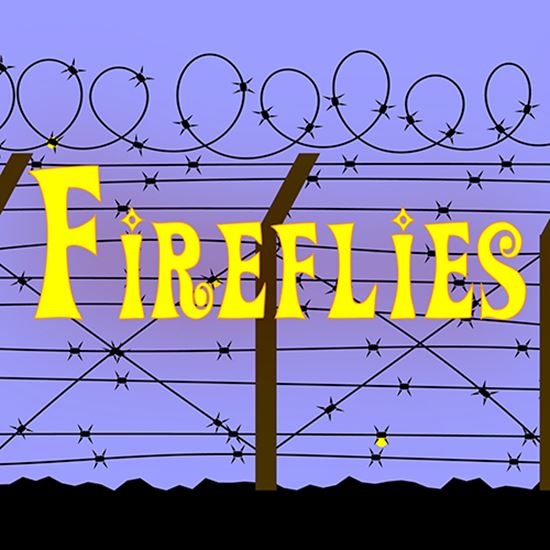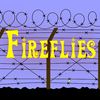












Fireflies
This drama is based on the true story of the well-known artist Friedl Dicker-Brandeis, who brought hope and beauty to thousands of children at the concentration camp of Terezin. It’s World War II and the Nazi juggernaut is running full-time, forcing Jews and other “undesirables” into concentration camps. At Terezin concentration camp in Czechoslovakia, one woman prisoner tries to make life bearable for the children. Using her passion for art and teaching, Friedl Dicker-Brandeis encourages them to draw pictures, often of home and family, trying to bring comfort to a place that has none. As Friedl struggles to protect the children from the ultimate horror, transport to the death camps, she becomes especially close to Rebecca, 16, and Eva, 13. Despite the terrible conditions, Terezin is touted as Hitler’s “gift to Jews,” and when the Red Cross presses for an inspection, Friedl is forced to contribute to the Nazi propaganda machine by designing a production of the children’s opera “Brundibár.” In defiance of his teacher and in despair at his own helplessness, Leo, 16, devises a plan to reach the visitors with the truth. His plot fails but he discovers that no matter how huge the lie, truth can still triumph through the enduring strength of human love and creativity. The play can be presented as a stand-alone piece or paired with a performance of the one-act children’s opera “Brundibár.”
FREE Monologue
* To use this monologue for audtions or competitions you must order a copy of the script.
FRIEDL: Oh, dear heart, you are so young. But listen, listen to me. If these visitors want to see the truth, they will. But they don’t. They don’t want the truth. The truth is too horrible. It’s too much for them. I think, when this is over, when the Nazis are defeated, it will still...it will take years for the world to face up to it. It may even take a generation. Your generation, Leo. It will be up to you. You and Rebecca and… Listen to me. Leo, look at me. You can beat Commander Rahm. You can beat Rahm and Hitler and every one of them. When you’re free, you can shout...shout the truth from the tree tops and make the world listen. But not now, you can’t do that now. Now you have to live. You see? Whatever you feel, whatever you do, your job right now is to stay alive.
FREE Monologue
* To use this monologue for audtions or competitions you must order a copy of the script.
LEO: Understand? Oh, I understand. I got it all from Kurt. These people from outside... from somewhere... out there. They’re coming here and the Nazis are going to show them new paint and smiling Jews sitting in a cafe. They’re going to show them cute little children in happy little shows. Of course, everything they see will be a lie but they won’t know that because they won’t see the old people, on stretchers, shoved into boxcars. They won’t see the mothers fighting for potato peelings or the babies with typhoid. They won't see the crematorium or smell the… It’s true isn’t it? These investigators are going to have a nice stroll through the Stadtpark. They’ll sniff the pretty flowers and then they’ll go out and tell the whole world how nicely Herr Hitler is caring for his Jews. Oh yes. The Jews in Europe are just fine. Happy and fine. They are going to spread THAT lie and we…YOU, you are going to help them do it. Now. Tell me Frau puppet, what is it I don’t understand?
Productions
Behind The Scenes
PLAYWRIGHT CHARMAINE SPENCER TALKS ABOUT HER PLAY
FIREFLIES
Q: WHAT INSPIRED YOU TO WRITE THIS PLAY?
A: During a trip to Prague a number of years ago, I visited a memorial to the Czechoslovakian holocaust victims. In a small room, was an exhibit of a few of the five thousand or more drawings created by children who were imprisoned at Terezin concentration camp north of the city. One of the drawings on display was of a puppet stage. At the time, I was teaching classes in theatre and puppetry myself. Near the door was a small photo of Friedl Dicker-Brandeis, the children’s teacher. I tried to imagine myself in her place but it was impossible. I wanted to know more about this unimaginably courageous woman.
Q: WHAT'S YOUR FAVORITE PART OR LINE IN THE PLAY? WHY?
A: There’s no way we can really understand what the real Friedl went through but I tried, in these lines, to convey the character’s pain and courage and great love for her students.
FRIEDL: Don’t you give up. If you give up, they win...
LEO: They have won.
FRIEDL: No, not until your last breath. Until your last breath, you hold your head up… (Taking his face in her hands.) Oh Leo, you burn so bright.
Q: WHERE DID THE CHARACTERS COME FROM? ARE THEY BASED ON PEOPLE YOU KNOW?
A: The characters of Friedl and Pavel are based on the facts I could find about the artist and her husband. Leo was inspired by a picture and notes in Susan Goldman Rubin’s book “Fireflies in the Dark,” Eva by a drawing reprinted in that book and Rebecca by the artist Helga Weissova, who, as of 2017, still lives and works in Prague.
Q: WHAT DID YOU TRY TO ACHIEVE WITH THIS PLAY?
A: I wanted people to know about Friedl and her students and about the Red Cross delegation that visited the camp, viewed a facade, carefully fabricated by the Nazis and went on their way. I want audiences to think about the horrible things that happen when lies are allowed to triumph over truth. It took great courage, in that circumstance, to speak the truth, but that’s what these young artists did with only colored pencils and a few scraps of paper. So, the truth finally was told, but it was much, much too late.
Q: DO YOU HAVE ANYTHING ELSE YOU'D LIKE TO ADD?
A: I will never forget, when the play was produced at The San Diego Center for Jewish Culture, an elderly woman came up to me and said, “I was in the camps, but today I am here to see my grandson on the stage. Hitler is dead. I am alive. I won.”
PLAYWRIGHT’S NOTES
The specific incidents in this play are invented. The setting, the visit by the Red Cross and the performance of “Brundibár” are true. The characters of Friedl and Pavel are based on real people and true to the extent that information is available. Though representative of the 15,000 children who experienced Terezin, Leo was inspired by a picture and notes in Susan Goldman Rubin’s book Fireflies in the Dark. Eva was inspired by a drawing reprinted in that book, and Rebecca was inspired by the artist Helga Weissova, who lives today in Prague.
The illustrations of ghetto life, referenced here, are from Helga Weissova’s book, “Draw What You See, A Child’s Drawings from Terezin.” Projections of the students’ artwork may be used, but are not essential, to the production. Requests for use of the drawings in the production must be directed to Helga Weissova Hoskova
Pani Helga Hoskova
Pod Kotlaskou 7
180 00 Praha 8
Czech Republic.
Tel. 011 420 284 821 885
Eva’s Seder drawing and the “Brundibár” photograph are from the collection of The Jewish Museum of Prague.
Jewish Museum of Prague
U Staré skoly 1
110 00 Prague 1
Czech Republic
phone: (+420.) 221 711 511, fax. (+420.) 221 711 584
office@jewishmuseum.cz
For “Girl’s Face” watercolor by Friedl Dicker-Brandeis contact the Beit theresienstadt Martyrs remembrance association at bterezin@ghi.org.il or phone 04-6369515.
Rights to use Music from “Brundibár” are available at Boosey and Hawkes music publishers. www.boosey.com/pages/cr/licensing/default.asp.
